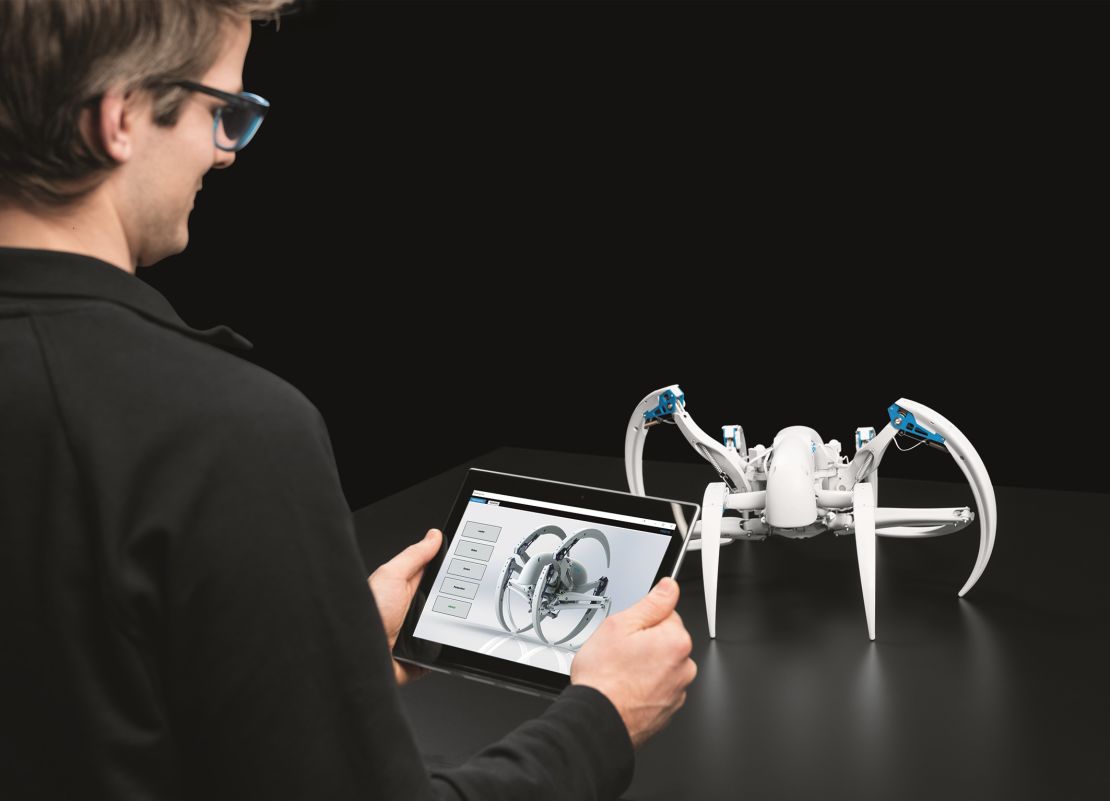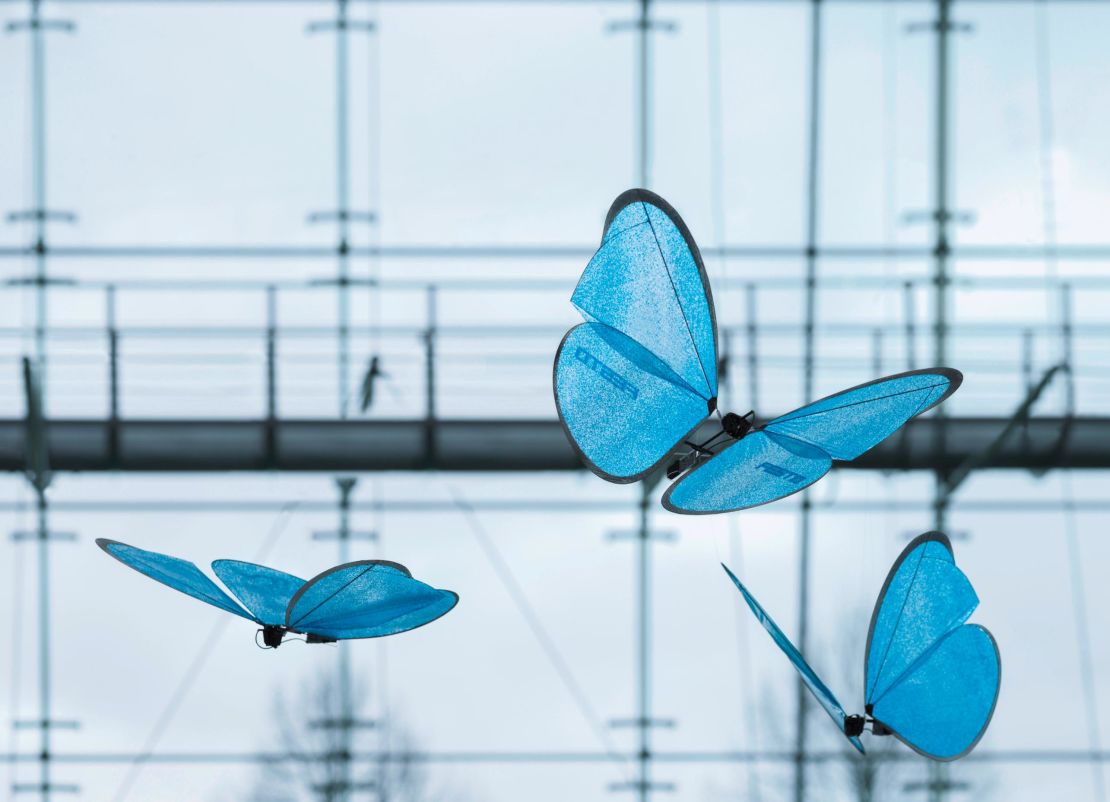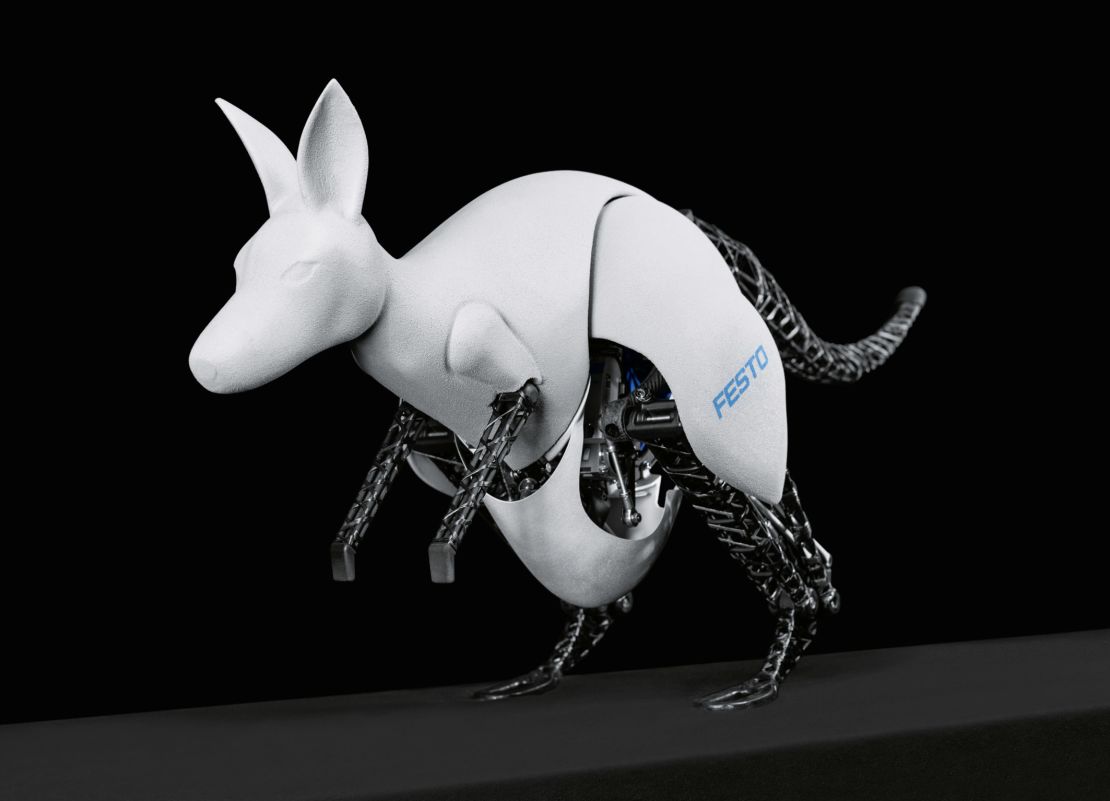German robotics company Festo’s new robo-spider looks menacing enough when it’s just sitting there. But let it engage its special ability – curling up into a ball and rolling around – and it will look ready to chase after you in your nightmares.
But despite its looks, this robot means no harm. It’s modeled after a real spider that dwells in the Moroccan desert and cartwheels to evade predators, propelling itself forward with its legs.
It belongs to a particular branch of robotics called bionics, which designs and engineers mechanical systems inspired by living organisms. “But more than copying nature, we are trying to learn from it,” Elias Knubben, head of corporate bionic projects at Festo, said in a phone interview. “We get inspired by nature by searching for fascinating principles in biology and solutions to technical problems.”
Flic-flac
In the sea of dunes of northern Sahara, the Moroccan flic-flac spider can more than double its walking speed when provoked, rolling like a wheel and somersaulting like a gymnast. “This spider’s movements are unique. No other animal that we know of so far is doing anything like that,” said Knubben.
Incredibly, it was not discovered by a biologist, but by a bionics professor, Ingo Rechenberg. “He was one of the fathers of bionics more than 40 years ago. He’s not a biologist, but he has a strong passion for the desert and he found this spider in 2008. Since then he’s been fascinated by it, and two years ago he asked if we could work with him on this project,” Knubben added.
Thus the robo-spider was born, and it was named BionicWheelBot. It is much bigger than the real thing – 1.8 feet versus less than an inch – but it replicates the movement faithfully through a total of 15 tiny motors. Some say it looks like the Droideka, an ominous battle droid from “Star Wars,” but Knubben assures the similarity is just a coincidence.
Although this is just a research project, a robot with this variety of movement could be a game-changer on uneven or difficult terrain. Its designer suggested that it could have applications in agriculture, on the ocean floor and even on the surface of Mars, where our current non-somersaulting rovers are constantly at risk of getting stuck in the sand.

Flying fox
Festo made headlines in 2011 when they unveiled the SmartBird, the first robot that flew like a real bird, modeled after the herring gull. “We have a quite big history in building flying robots with flapping wing mechanism, and they always get a lot of attention at fairs from fascinated customers,” said Knubben.
Flapping wings robots are more difficult to design and control than other types of flying robots, because there’s no continuous force providing lift, as in the case of propellers.
The newly released BionicFlyingFox is Festo’s attempt at replicating featherless flight. It has a large wingspan of 7.4 feet and can fly semi-autonomously once airborne, with a human controller only performing takeoffs and landings.
It’s modeled after the flying fox, a large type of bat that gets its name from its fox-shaped head. This choice has come with some design challenges.
“The first was to be able to fold this huge wing into a small area. For that we have developed an elastic membrane with 3D-knitted fabric in combination with two airtight films. The result is something that can stretch a lot but it’s also lightweight,” said Knubben. The robots weigh 580 grams, or 20 ounces.
Festo’s other flying robots include a blimp-like penguin filled with helium, a lightweight dragonfly with four wings, and the delicate eMotionButterflies, which represented a first foray into the idea of swarm behavior, the ability of some insects to instinctively act as a cohesive group, which was then perfected by replicating the most collaborative of insects, the ant.

Like a concept car
None of these robots are for sale. So why does Festo make them?
“We get a lot of requests from the toy industry, the drone industry, the military, but we’re not interested in selling them because they are so closely connected to us and we’d rather show them around in conferences, fairs and museums,” said Knubben.
Festo makes its money from pneumatics and industrial automation, but the robo-animals are an interesting way to test out innovative designs that may end up in a more ordinary industrial robot.
“For example, to make a robotic kangaroo we did do a lot of research on how to put the energy from the landing phase into the next jump, and this is something we need in automation, where motors have to move in one direction, then stop, then move again in the opposite direction. Now we have some technical solutions that are inspired by these ideas,” said Knubben.

The process, Knubben said, is quite similar to how the car industry uses concept cars, which are testbeds for innovation and new ideas that could one day find their way into production vehicles.
“Most of the animals will never become products, but we try to learn from each one.”


















